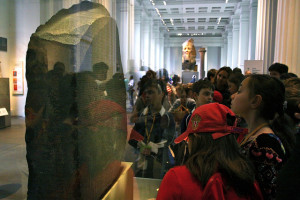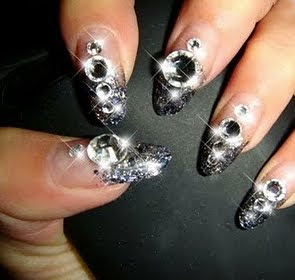
Writing article introductions is seriously hard.
The truth is, most of us start with the middle section of our story in our mind. We want to explain how to do ‘x’, or why we think ‘y’ is a great idea. Writing this part is generally easy, because we know exactly what we want to achieve.
Writing the conclusion isn’t too difficult once we’ve written the middle. We sum up what we’ve just written and perhaps add a personal insight or reflection. (* Footnote on writing conclusions below).

Article intro paragraphs are difficult for the same reason that opening lines are difficult at parties, bars and park benches. We all know how to have a conversation, but finding a smooth way to start a conversation with a stranger feels like a really high-stakes game. That’s probably explains why chat-up technique books sell tens of millions every year.
So, I guess I’m here to give you some clever chat-up lines for your readers.
So, What’s the Key to a Great Intro?
Diamonds. Or more specifically a single diamond–rather than two or three–to build your intro around. A diamond — by my definition—is a single, shining jewel designed to grab the reader’s attention. It’s usually not part of your core idea, but it helps make sense of it.
For me, there are four types of diamonds you can look to use (but there may be others). I’ll run you through each one:
1 . The Clever Quote
Quote sites like Brainyquote.com are one of the fastest ways to unearth a diamond. For instance, if you’re writing about logo design, search for quotes from Saul Bass or Andy Warhol. Chances are, they said something witty, insightful and memorable at some point. Even movie quotes via IMDB can be a really fun way to kick off a dry, more technical article.
But also try to avoid the obvious option. For instance, rather than another article on ‘creativity’ quoting Steve Jobs or Einstein, try searching for ‘problem solving’ and maybe go with a quote from Apollo 13.
I don’t care about what anything was DESIGNED to do, I care about what it CAN do.
Gene Kranz — Apollo 13 (1995)
Writing a few paragraphs about what that quote means to you, and how it relates to your main theme should lead you effortlessly into the body of your piece.
2. The Intriguing Image
We all understand the power of a great image — try to find a compelling image that is at a slight tangent to your main subject.

For instance, if you’re writing about ‘digital encryption’, rather than finding a picture of ‘matrix-like’ code, you might find a great image of the Rosetta Stone — the tablet that allowed us to finally de-code egyptian hieroglyphics.
Always avoid cliche images (sunsets, puppies, beaches, motivational poster images) unless you’re clever enough to subvert or invert the meaning.
I tend to start with Flickr’s search with ‘commercial use’ set in the filtering. Pixabay.com is handy too.
3 . The Startling Statistic
A 2-second delay in load time during a transaction results in abandonment rates of up to 87% . – Source: Radware
Numbers can speak loudly and quickly. If you can find a credible study that supports your main idea, your intro almost writes itself. Always credit and link the source (if possible), and check the date of the study — out-of-date statistics smell bad.
Typically you may only need 2 or 3 paragraphs to support a powerful number.
4. The Compelling Chart

‘The Compelling Chart’ is like the hip designer brother of the ‘The Startling Statistic’, using color and shape in the place of a pure numerical story.
It will typically be harder to find a relevant chart/graph to support your main idea, but if you get lucky, it’s a killer first punch.
If you have access to relevant statistics, it may even be worth making you own chart to support your ideas.
That’s all there is to it?
(Note that I didn’t use ‘Conclusion’ for that final subheading? *)

Yes, that’s it. Write up your body idea first, then write your conclusion, and THEN spend 15 minutes hunting for your diamond – the memorable, interesting gem that will draw your readers into your real message.
And finally, if you happen to unearth two, three or more diamonds for your intro, don’t be tempted to jam them all in there.
Pick your best one, and shelve the rest for another day.
With diamonds, less is almost always more.
- * Footnote tip: When starting your article, it’s useful to label your last subheading ‘Conclusion’ in your first draft. But always try to re-title that section with something less stiff in your final draft — perhaps ‘What I learned’ or ‘The Wash-up’ or ‘Is it worth it?’.
Frequently Asked Questions about Writing Engaging Article Introductions
How can I make my article introduction more engaging?
To make your article introduction more engaging, start with a hook. This could be a surprising fact, a provocative question, or a bold statement that grabs the reader’s attention. Then, provide some context or background information to set the stage for your main points. Finally, end your introduction with a clear and concise thesis statement that outlines what the reader can expect from the rest of your article.
What are some common mistakes to avoid when writing an article introduction?
Some common mistakes to avoid when writing an article introduction include being too vague, too detailed, or too boring. Avoid using cliches or generic statements. Instead, strive for originality and specificity. Also, avoid making your introduction too long. Keep it concise and to the point, but make sure it effectively sets up the rest of your article.
How can I make my article introduction more informative?
To make your article introduction more informative, clearly state the purpose of your article and what the reader can expect to learn from it. Provide some background information or context to help the reader understand your topic. Use credible sources to support your points and enhance your credibility.
How can I make my article introduction more persuasive?
To make your article introduction more persuasive, start with a strong hook that grabs the reader’s attention. Then, present a clear and compelling argument or point of view. Use persuasive language and rhetorical devices such as ethos, pathos, and logos to appeal to the reader’s emotions, ethics, and logic.
How can I make my article introduction more interesting?
To make your article introduction more interesting, use storytelling techniques to engage the reader’s imagination. Use vivid language and sensory details to paint a picture in the reader’s mind. Incorporate humor, anecdotes, or personal experiences to make your introduction more relatable and engaging.
How can I make my article introduction more unique?
To make your article introduction more unique, strive for originality in your ideas, language, and approach. Avoid cliches and generic statements. Instead, use your unique voice and perspective to present your topic in a fresh and interesting way.
How can I make my article introduction more concise?
To make your article introduction more concise, keep your sentences short and to the point. Avoid unnecessary words or phrases. Use clear and simple language to convey your ideas effectively. Also, make sure your introduction effectively sets up the rest of your article without being too detailed or lengthy.
How can I make my article introduction more professional?
To make your article introduction more professional, use formal language and a professional tone. Avoid slang or colloquialisms. Use credible sources to support your points and enhance your credibility. Also, make sure your introduction is well-organized and free of grammatical errors.
How can I make my article introduction more personal?
To make your article introduction more personal, incorporate your own experiences, thoughts, or feelings into your writing. Use a conversational tone to make your writing more relatable and engaging. Also, use “I” or “we” to speak directly to the reader.
How can I make my article introduction more impactful?
To make your article introduction more impactful, start with a strong hook that grabs the reader’s attention. Then, present a clear and compelling argument or point of view. Use powerful language and vivid imagery to evoke emotion and create a lasting impression. Finally, end your introduction with a strong thesis statement that leaves the reader eager to read more.
 Alex Walker
Alex WalkerAlex has been doing cruel and unusual things to CSS since 2001. He is the lead front-end design and dev for SitePoint and one-time SitePoint's Design and UX editor with over 150+ newsletter written. Co-author of The Principles of Beautiful Web Design. Now Alex is involved in the planning, development, production, and marketing of a huge range of printed and online products and references. He has designed over 60+ of SitePoint's book covers.



